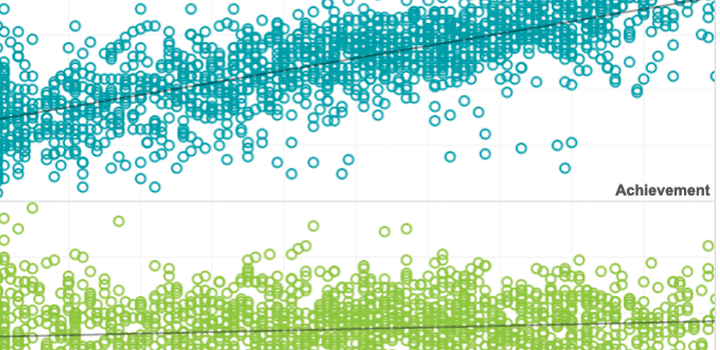Presentation
NISS Ingram Olkin Forum: COVID and the Schools: Modeling Openings, Closings, and Learning Loss
2020
By: Megan Kuhfeld

Description
In this National Institute of Statistical Sciences (NISS) Ingram Olkin “Statistics Serving Society” Forum, experts from around the country share statistical and data-analytic challenges they have faced as they have reported on and researched issues around the impact of COVID-19 in U.S. schools. Read more on the forum and presenters on the NISS webpage.
See MoreTopics: COVID-19 & schools, Measurement & scaling
Related Topics



An investigation of examinee test-taking effort on a large-scale assessment
Most previous research involving the study of response times has been conducted using locally developed instruments. The purpose of the current study was to examine the amount of rapid-guessing behavior within a commercially available, low-stakes instrument.
By: Steven Wise, J. Carl Setzer, Jill R. van den Heuvel, Guangming Ling
Topics: Measurement & scaling, School & test engagement, Student growth & accountability policies


These studies are conducted based on assumptions under regular conditions for fixed test forms, such as no missing responses and normal distribution of unidimensional ability for a population.
By: Shudong Wang, Hong Jiao
Topics: Measurement & scaling, Computer adaptive testing, Item response theory


This study, using real data, provides empirical evidence of construct and invariance construct of MAP scales across grades at different academic calendars for 10 different states.
By: Shudong Wang, Marth S. McCall, Hong Jiao, Gregg Harris
Topics: Measurement & scaling, Test design


The current investigative study uses a multiple-indicator, latent-growth modelling (MLGM) approach to examine the longitudinal achievement construct and its invariance for MAP Growth.
By: Shudong Wang, Hong Jiao, Liru Zhang
Topics: Measurement & scaling, Growth modeling


The potential of adaptive assessment
In this article, the authors explain how CAT provides a more precise, accurate picture of the achievement levels of both low-achieving and high-achieving students by adjusting questions as the testing goes along. The immediate, informative test results enable teachers to differentiate instruction to meet individual students’ current academic needs.
By: Edward Freeman
Topics: Innovations in reporting & assessment, Measurement & scaling, Student growth & accountability policies


The phantom collapse of student achievement in New York
When New York state released the first results of the exams under the Common Core State Standards, many wrongly believed that the results showed dramatic declines in student achievement. A closer look at the results showed that student achievement may have increased.
By: John Cronin, Nate Jensen
Topics: Measurement & scaling


